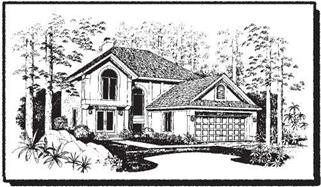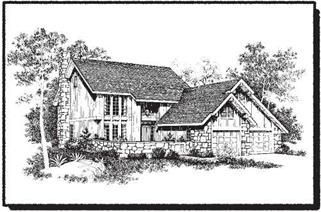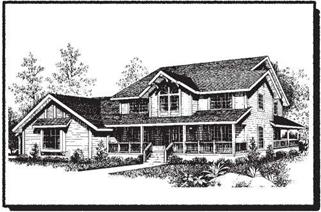Whereas architectural style is important when it exists, architectural character is always important. Architectural character can be viewed as the composite of physical attributes and features that together display an overall integrity. Figure 1—30 shows three different houses that do not have styles that are easily recognizable. Each house has certain parts that resemble another style, but not in an overall sense. Houses like these that have aspects of different styles are often referred to as eclectic. If you were the landscape designer for a client with one of these houses, you might not be able to find resource material to help you become more acquainted with that particular type and character of house, and that is normal. These houses do not have to have a specific style for which the designer develops architecturally responsive landscape designs. All they need is architectural character, which each of them does possess.
It is normal for people to want landscapes that are similar to other people’s landscapes, but they want them to fit themselves, not others. They want things to look like they belong, like the design was meant for that house and site. The uniqueness of a design lies in the relationship between the existing and the proposed. What can make something special or different is focusing, with your attention on the relevant detail, on the character of the client, house, and site as a landscape design evolves and unfolds.
|



SUMMARY
The typical American residential site has a number of attributes as well as negative traits, as discussed in this chapter. Having read this chapter, you should know the following:
• Overall traits of the typical residential site such as location of house, types of yards, and the general characteristics and uses of each
• Conventional problems of the front yard that relate to the lawn edges, driveway, garage door, front walk, entry foyer, foundation planting, plantings, and use of the front yard
• Typical concerns of the backyard related to views to neighbors, enclosure, size of outdoor living areas, privacy, microclimates, visual character, relation to interior of the house, storage sheds, and vegetable gardens
• Ordinary difficulties of side yards such as access, storage, microclimate, efficiency of space, and views between houses
• Factors that establish an architectural style of a house and why some houses have no particular style
• Features of a house that give it character and can give visual clues for the adjoining landscape



